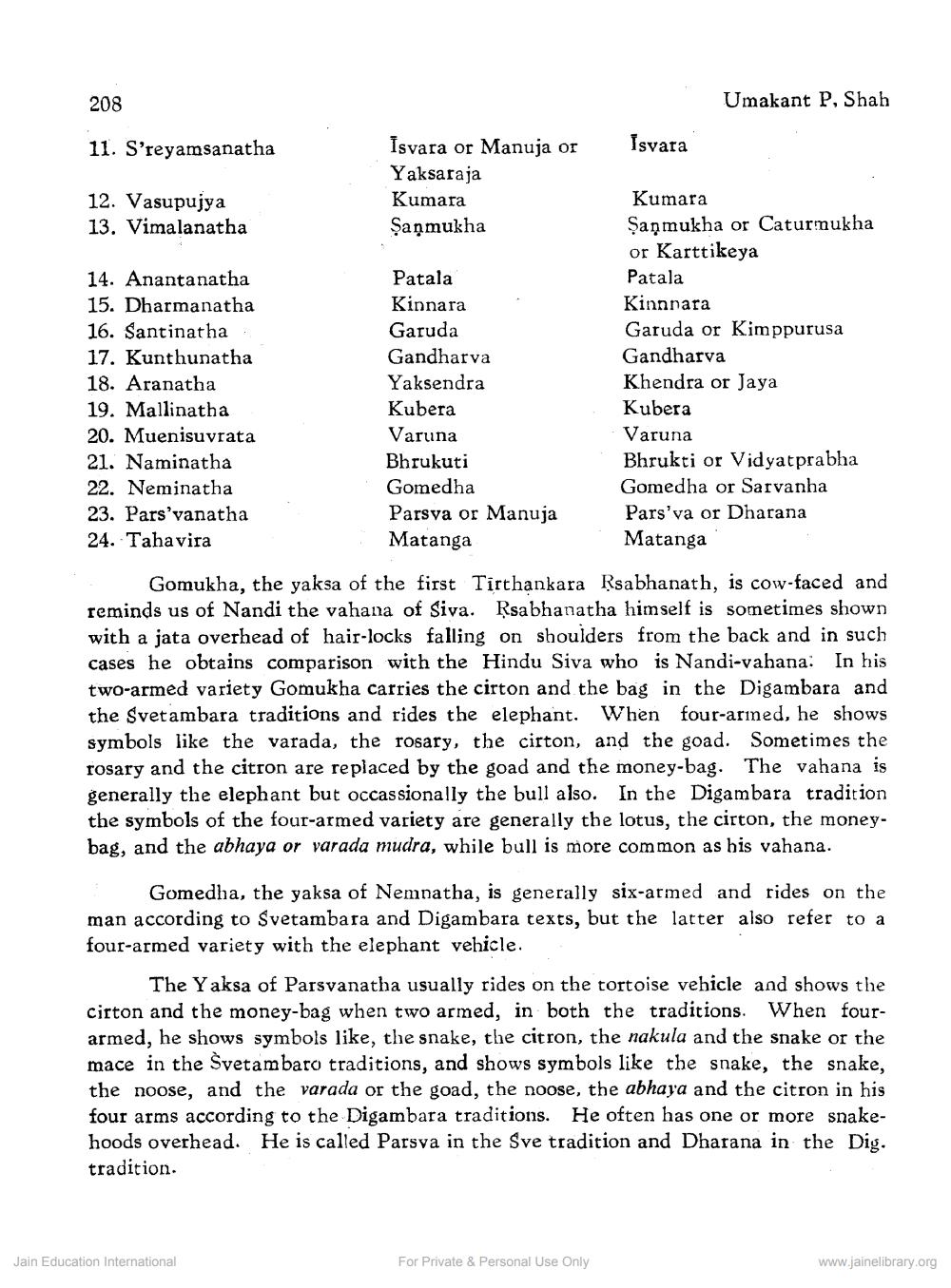________________
208
Umakant P, Shah
11. S'reyamsanatha
Isvara
Isvara or Manuja or Yaksaraja Kumara Şaņmukha
12. Vasupujya 13. Vimalanatha
14. Anantanatha 15. Dharmanatha 16. Santinatha 17. Kunthunatha 18. Aranatha 19. Mallinatha 20. Muenisuvrata 21. Naminatha 22. Neminatha 23. Pars'vanatha 24. Tahavira
Patala Kinnara Garuda Gandharva Yaksendra Kubera Varuna Bhrukuti Gomedha Parsya or Manuja Matanga
Kumara Şanmukha or Caturmukha or Karttikeya Patala Kinnnara Garuda or Kimppurusa Gandharva Khendra or Jaya Kubera Varuna Bhrukti or Vidyatprabha Gomedha or Sarvanha Pars'va or Dharana Matanga
Gomukha, the yaksa of the first Tirthankara Rsabhanath, is cow-faced and reminds us of Nandi the vahana of Siva. Rsabhanatha himself is sometimes shown with a jata overhead of hair-locks falling on shoulders from the back and in such cases he obtains comparison with the Hindu Siva who is Nandi-vahana: In his two-armed variety Gomukha carries the cirton and the bag in the Digambara and the Svetambara traditions and rides the elephant. When four-arned, he shows symbols like the varada, the rosary, the cirton, and the goad. Sometimes the rosary and the citron are replaced by the goad and the money-bag. The vahana is generally the elephant but occassionally the bull also. In the Digambara tradition the symbols of the four-armed variety are generally the lotus, the cirton, the moneybag, and the abhaya or varada mudra, while bull is more common as his vahana.
Gomedha, the yaksa of Nemnatha, is generally six-armed and rides on the man according to Svetambara and Digambara texts, but the latter also refer to a four-armed variety with the elephant vehicle.
The Yaksa of Parsvanatha usually rides on the tortoise vehicle and shows the cirton and the money-bag when two armed, in both the traditions. When fourarmed, he shows symbols like, the snake, the citron, the nakula and the snake or the mace in the Svetambaro traditions, and shows symbols like the snake, the snake, the noose, and the varada or the goad, the noose, the abhaya and the citron in his four arms according to the Digambara traditions. He often has one or more snakehoods overhead. He is called Parsva in the Sve tradition and Dharana in the Dig. tradition.
Jain Education International
For Private & Personal Use Only
www.jainelibrary.org




